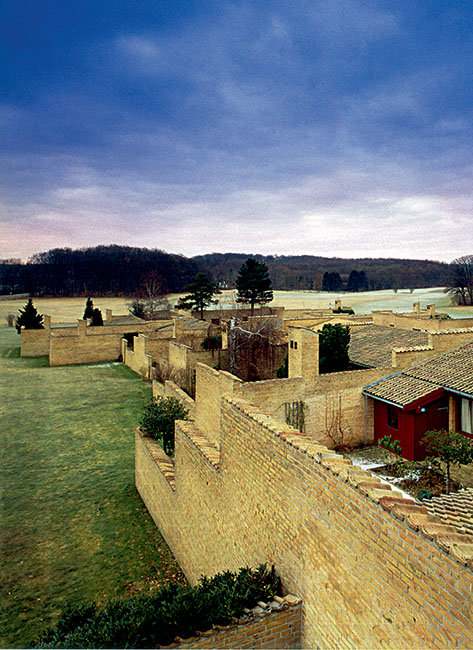The Fællesgård
A Danish Saga about Cooperative Living
Abstract
On 26 June 1968 the Danish architect Jan Gudmand-Høyer published a remarkable article in the Information newspaper under the title The Missing Link between Utopia and the Outdated One- Family House. In this mild polemic he describes how the lifestyles of many Danes have changed radically since the early 1950s as a result of consolidation in a number of social spheres (including consumption, health care and education), new family structures (double-income and single-parent families) and increased car use. The suburban neighbourhoods that were popping up all over Denmark in the 1950s and ’60s did not do enough to accommodate these changing lifestyle patterns, according to Gudmand-Høyer. Private developers were building monotonous neighbourhoods with single-family dwellings (parcelhus) while the government was experimenting with rational high-rises based on prefabrication. Both led to isolation and anonymity. Against this backdrop Gudmand-Høyer advocated the design of new neighbourhoods which would meet these contemporary lifestyles and in which community and identity would occupy centre stage.
Gudmand-Høyer was not alone in his views. They were shared by the Danish environmental psychologist Ingrid Gehl in Bomiljø (1971) and her husband, architect Jan Gehl, in Livet mellem husene (1971). The English translation of the latter, Life Between Buildings, remains popular to this day. Working at the intersection of sociology, psychology, architecture and planning, they both advocated a focus on ‘life between buildings’ and pressed for the reintroduction of what they saw as more humane communal spaces. What constitutes the essence of a housing project is neither a particular type nor a rational layout but the collective space between houses, according to Ingrid and Jan Gehl. Inspired by Christopher Alexander’s research into a pattern language they went in search of concrete architectural elements that provide safe and child-friendly outdoor spaces, in which gathering and community life occupy centre stage. Their examples, many of which were illustrated with photographs, were taken from lively public spaces in urban contexts. The books by Ingrid and Jan Gehl were to leave an indelible imprint on the Danish debate about collective housing projects.



